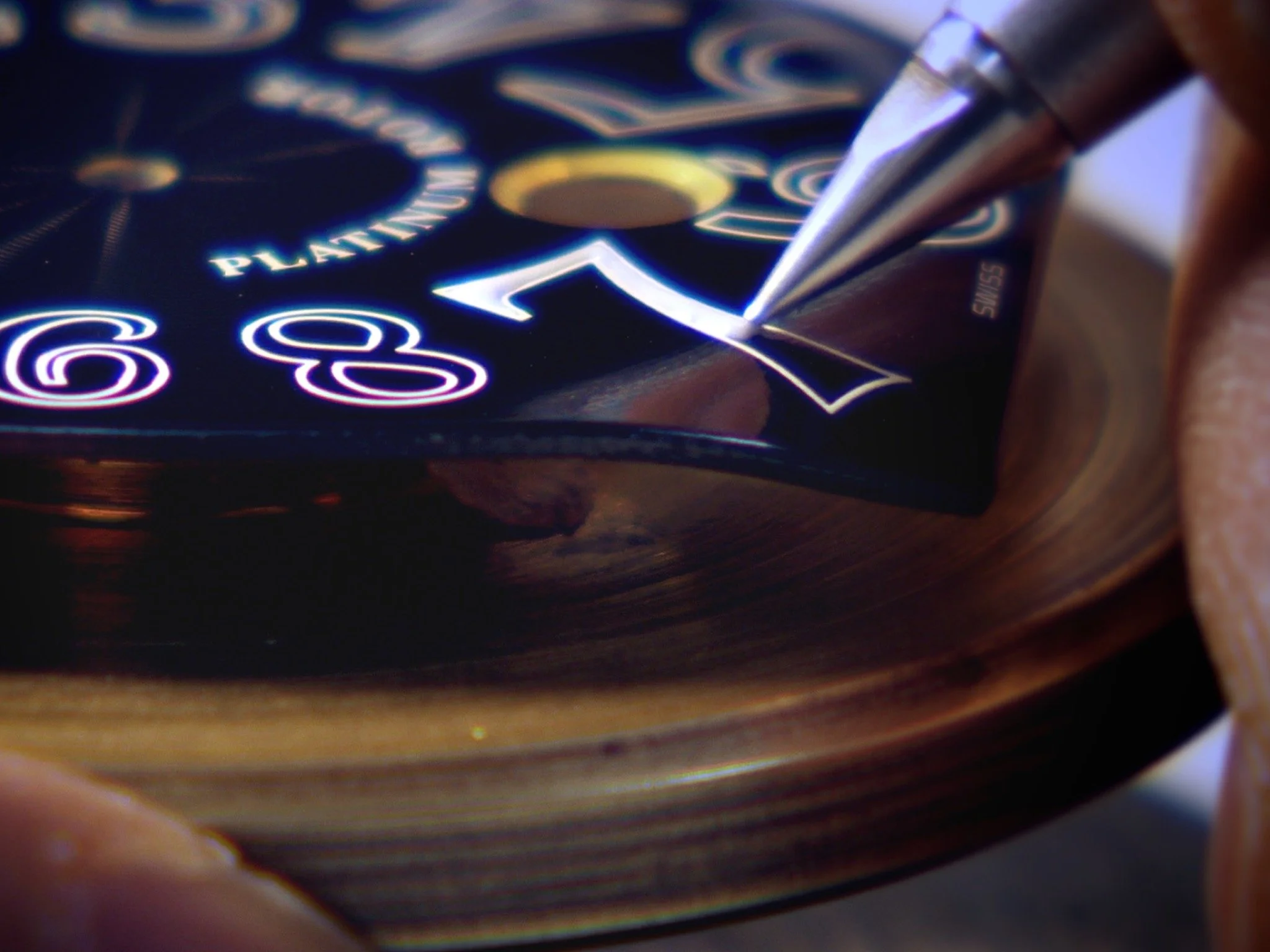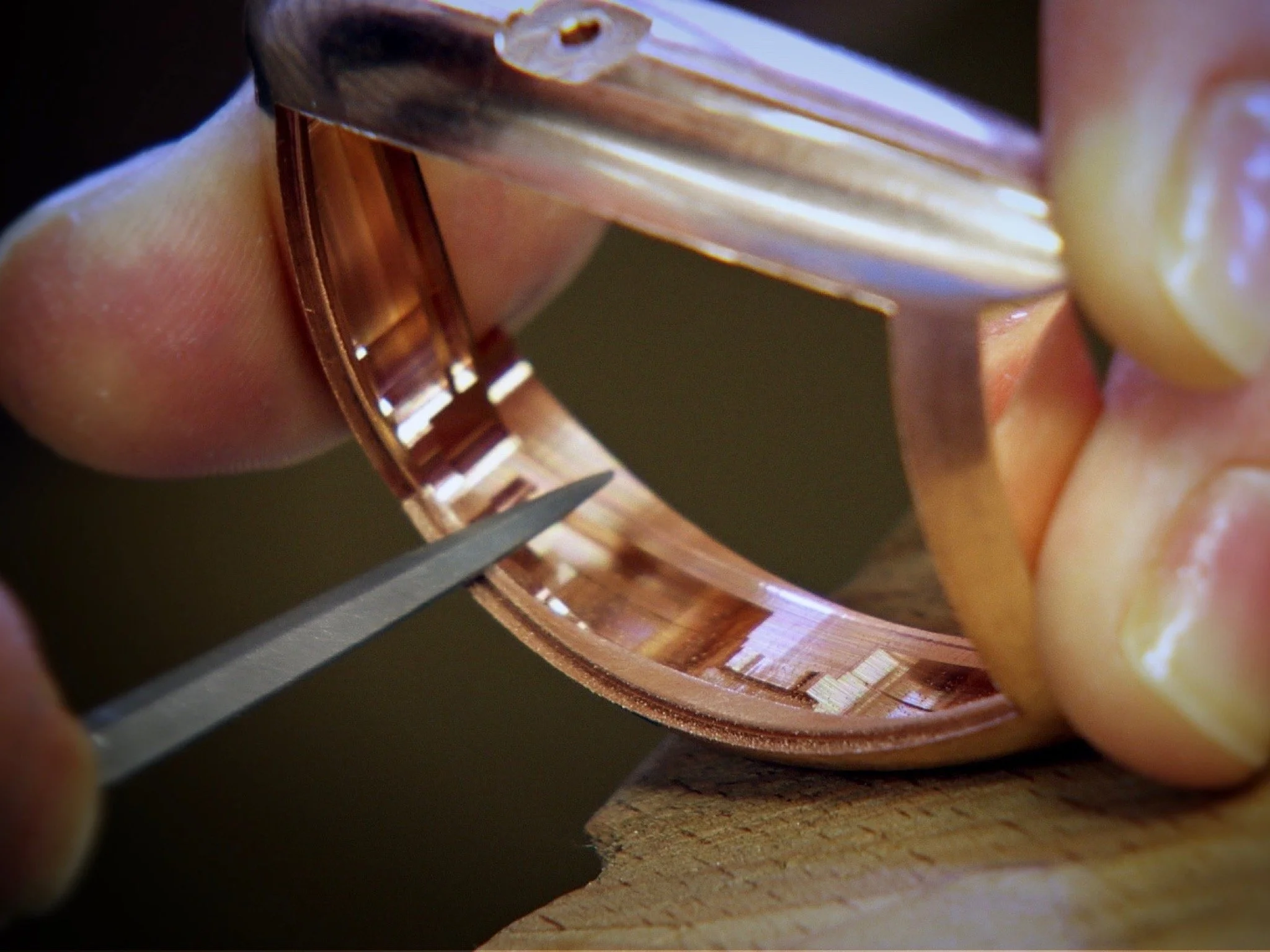Our Craftsmanship - Dedication to Haute Horlogerie
Franck Muller is proud to present its craftsmanship campaign that showcases the crafts required to create a timepiece. Thanks to its incredible in-house capabilities, the brand can push barriers of watchmaking even further with innovative complications and great technique whilst fully respecting Swiss watchmaking tradition.
Making a Movement
The Tourbillon Perpetual Calendar, an empiric complication, is manufactured entirely in-house. Beginning with hundreds of technical sheets for all the components, the components are then manufactured, delicately decorated and perfected before being incorporated into this exceptional movement.
Making a Dial
Franck Muller dials are manufactured entirely in house at our factory located in Les Bois, in the Swiss Jura. The artistry and talent behind a Franck Muller dial is incredible. Each dial needs 20 layers of lacquer and requires a drying period of one hour for each layer. Finally, the carefully hand painted Luminova numerals complete the work of art.
Making a Case
Franck Muller cases are manufactured entirely in house. They are stamped at our factory in La-Chaux-De-Fonds and then delivered to Watchland in Geneva for completion. All cases are artisanally polished by hand. Also, diamond cases require an incredible amount of time and mastery to accomplish, particularly with the Cintrée Curvex where it is very difficult to hand-set the diamonds along its curves.
Our watch decorations
Timepieces created by Franck Muller offer quintessential aesthetics and exceptional finishing on every component of our watch movements, whether they are visible or not. The level of care lavished upon them in our workshops makes Franck Muller watches truly exceptional. They are at the pinnacle of the art of watchmaking.
Engraving
We use engraving to personalise and embellish our open-back watches. Delicate motifs, engraved on the different parts of the movements, are beautiful ornaments that give a watch its unique personality.
Côtes de Genève
This finish, known as Geneva stripes in English, looks like small parallel waves formed on a metal surface. They are present on the bridges and the rotor plate. Famous today, this form of decoration was, for many years, a distinguishing feature of watchmaking in Geneva.
Spotting
Known also as perlage in French, this decoration is made up of slightly overlapping circles or spots. It is mainly found on the bearing surfaces of the plates of watch movements. It is carried out by hand by skilled craftsmen.
Sunray brushing & Snailing
Sunray brushing is a decoration made up of straight lines running from the centre to the edge of the piece and depicts the sun’s rays. A variant of this is snailing, a pattern consisting not of straight lines but of slight spirals. These finishes can be found primarily on the rotor segment and the barrel.
Bevelling
This hand-crafted finish consists of cutting the edge between the surface and the sides of a piece, creating, most frequently, a 45° chamfer, which is then carefully polished. In addition to the aesthetic aspect, this eliminates sharp edges, a source of crenellation, which could interfere with the proper functioning of the movement.
Mirror Polishing
Mirror polishing, also known as black polishing or block polishing, represents the highest possible degree of polish. It leaves no visible traces and produces outstanding optical effects. Light is reflected in only one direction and, depending on the orientation, the piece changes from deep black to bright white.
Shot-blasting
Shot-blasting is a surface treatment process, similar to sanding. It involves subjecting a surface to a stream of glass microbeads, which strips it without damaging it. The surface thus obtained is shiny, like satin. In addition to the aesthetic aspect, it also eliminates sharp edges, which are a source of crenellation.
Satin-finishing
This involves decorating a metal surface with a series of extremely fine, parallel stripes. The effect created is regular, clean and catches the light from several angles. It must be uniform and, above all, the alignment of the micro-stripes must be flawlessly parallel.
Circular Graining
The Circular Graining is a circular satin finish, a form of smoothing that produces fine circular lines and adds shine. This decoration is achieved by pressing a “baff”, a buffing stick, onto the surface of a rotating piece.
Diamond polishing
Diamond polishing is carried out by turning or milling on non-ferrous metals, using tools set with diamonds. Diamond polishing is used to produce high gloss surfaces, such as on bridge bevels.
Drawing
The craftsman first removes machining marks and burrs from the flanks, then begins the étirage or drawing process, using different files to achieve a smooth, clean appearance. These processes leave marks and striations. Careful smoothing and polishing will result in a honed, even surface, which is essential for good bevelling.
Rhodium plating
Rhodium plating consists of electrolytically depositing a layer of 24k gold and then rhodium on a component to prevent corrosion and extend its life.

















